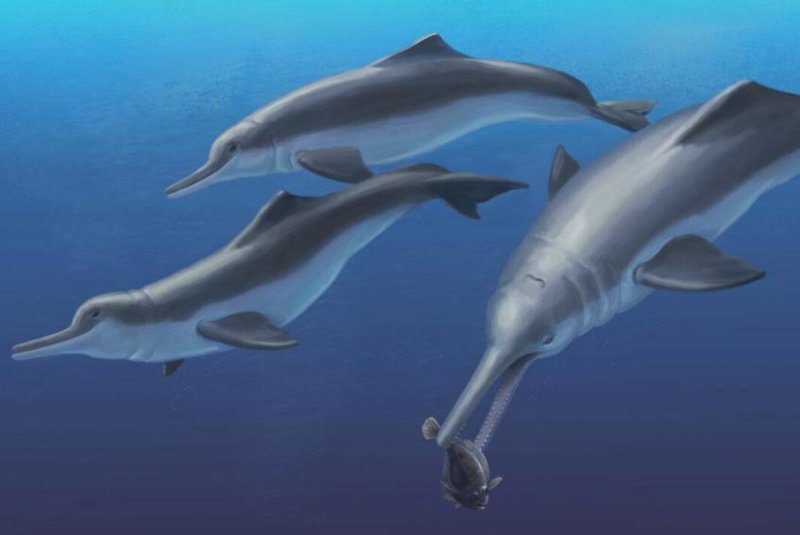Researchers have identified one of the earliest species of river dolphins. Photo by Julia Molnar/Smithsonian Institution
PINA, Panama, Sept. 1 (UPI) -- Researchers at the Smithsonian have identified an extinct genus and species of river dolphin that navigated ancient Earth's deltas some six million years ago.
Today, there are only four living species of river dolphins, but the new skeletal remains suggest the ancestors of today's river dolphins were many and widespread across the globe.
The new species and genus, classified as Isthminia panamensis, was discovered in Panama. The specimen's bones -- which includes half a skull, lower jaw, a near full set of conical teeth, right shoulder blade and two small flipper bones -- reveal a dolphin that was nearly nine feet in length.
And while the species' morphology -- broad, paddle-like flippers, flexible necks and long, narrow snouts -- suggest an animal well suited to hunting the silty bends of a coastal river, they also reveal an animal only recently removed from its ocean-bound relatives. Researchers say the new species highlights the early evolution of river dolphins, marking a transition between saltwater and freshwater living.
"We discovered this new fossil in marine rocks, and many of the features of its skull and jaws point to it having been a marine inhabitant, like modern oceanic dolphins," Nicholas D. Pyenson, curator of fossil marine mammals at the Smithsonian's National Museum of Natural History, said in a press release.
Pyenson is the lead author of a new paper on the discovery, published this week in the journal Peer J.
"Many other iconic freshwater species in the Amazon, such as manatees, turtles and stingrays have marine ancestors, but until now, the fossil record of river dolphins in this basin has not revealed much about their marine ancestry," Pyenson added. "Isthminia now gives us a clear boundary in geologic time for understanding when this lineage invaded Amazonia."
Researchers say the fossils of other animals found near the dolphin specimen suggest the ancient river dolphin species likely stayed near the coast, hunting salty and brackish waters.
"Isthminia is actually the closest relative of the living Amazon river dolphin," said study co-author Aaron O'Dea, research scientist at the Smithsonian Tropical Research Institute. "While whales and dolphins long ago evolved from terrestrial ancestors to fully marine mammals, river dolphins represent a reverse movement by returning inland to freshwater ecosystems. As such, fossil specimens may tell stories not just of the evolution these aquatic animals, but also of the changing geographies and ecosystems of the past."















